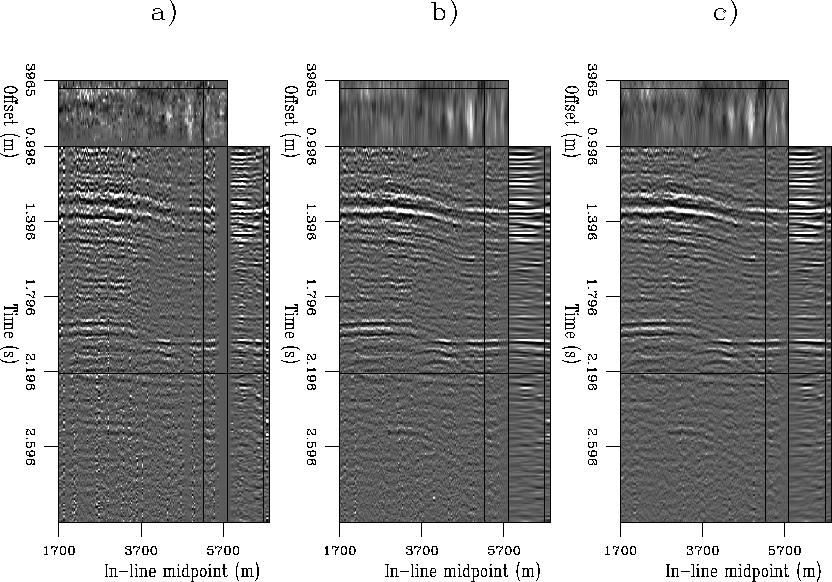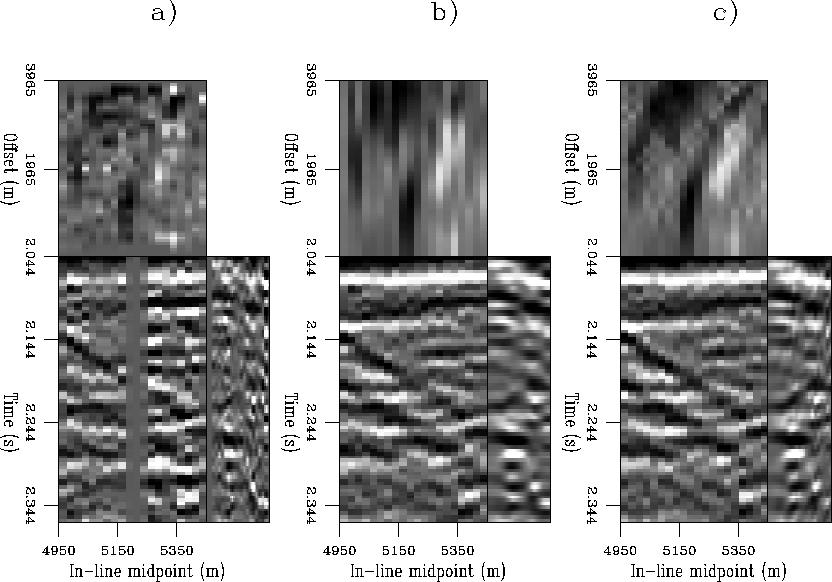 |
Figure 3 A prestack line after geometry regularization with: a) normalization, b) regularization, c) AMO regularization.
Figure 3 compares the results of geometry regularization of the three methods discussed above for one line. Figure 3a shows the results for normalization, Figure 3b shows the results for regularization, and Figure 3c shows the results for AMO regularization. Comparing the in-line sections at one offset (3.38 km) shows the advantages of both regularization and AMO regularization over simple normalization. The data amplitudes after normalization are still fairly uneven, and thus they are likely to produce artifacts during the migration. On the contrary, in the data obtained using regularization the data amplitudes are better balanced. The steeply dipping reflection from the fold at the reservoir level is better preserved in the AMO regularization results than in the simple regularization results. The reason is quite apparent when examining the data as a function of offset for one particular midpoint location. The dipping event is smiling upward after NMO, and thus it is attenuated by simple smoothing over offset.
Figure 4 shows a detail of the same line that illustrates the effects of the regularization term during the process. As for Figure 3, Figure 4a shows the results for normalization, Figure 4b shows the results for regularization, and Figure 4c shows the results for AMO regularization. An acquisition gap is clearly visible in the middle of the constant-offset (2.275 km) section in panel (a). Simple normalization cannot fill the gap. On the contrary, the gap is filled in the regularized results, that exploit the information from the neighboring offsets. The gap in the dipping event is better filled by the AMO regularization because the information from neighboring offsets is moved to the missing data consistently with their kinematics. The differences in behavior between the two regularization methods are apparent when analyzing the time slices in the upper part of the figure. As the dipping event moves towards higher offset (up), it also moves towards further midpoint (right). This movement is well seconded by the AMO regularization, while it is smoothed over by the simpler regularization scheme.
 |
 |